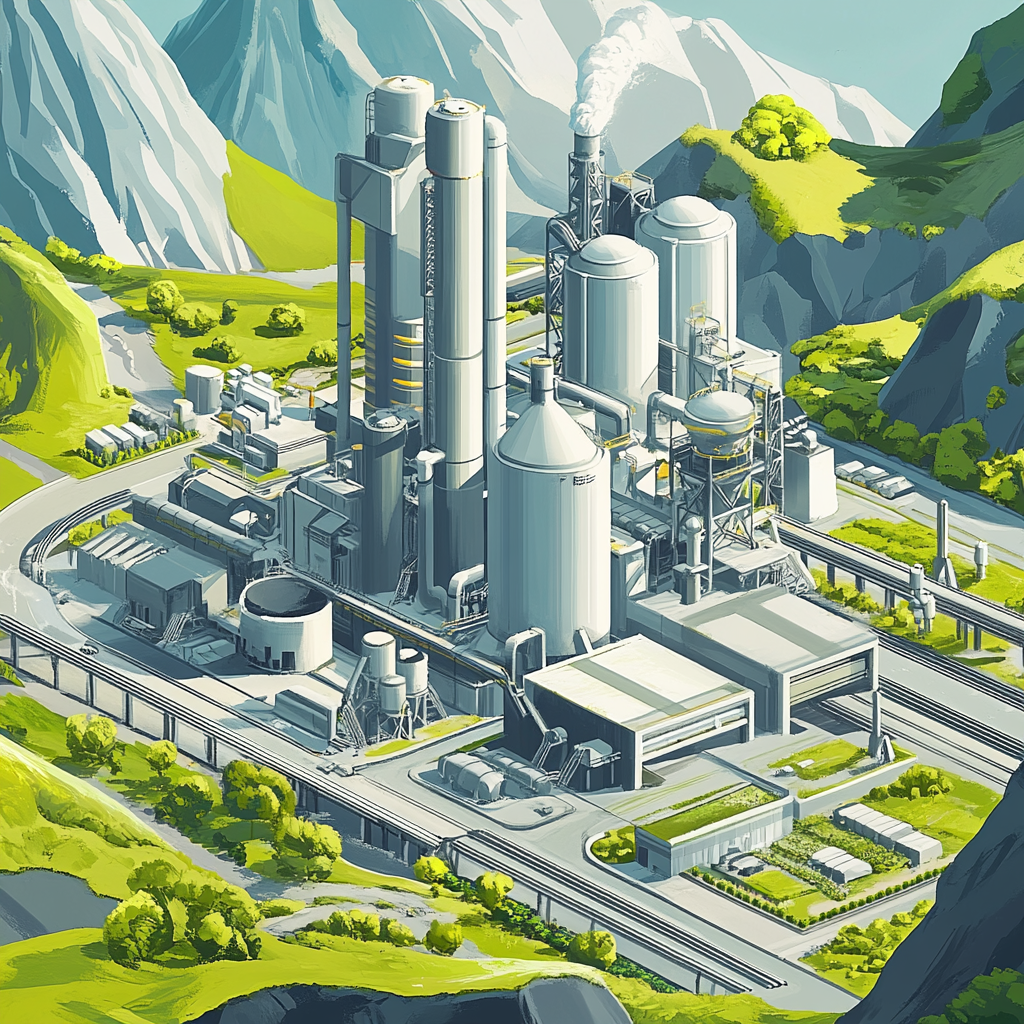
“Engineers Innovate for Eco-Friendly Cement”
In a spectacular twist on the age-old conundrum of concrete and climate, engineers over at UCLA's Institute for Carbon Management have cracked the code on cement production emissions. Their brainchild, the ZeroCAL process, stands to revolutionize the construction industry by slashing carbon dioxide emissions by an astonishing 98%. Let me break down the magic behind this groundbreaking achievement and why it matters to all of us.
First, let's confront the elephant in the room: cement production, as it stands, is a heavyweight contender in the climate crisis, responsible for around 8% of global CO2 emissions. Yes, it’s that bad. Now, in sails ZeroCAL, a method that promises to clean up the act of this carbon behemoth through an innovative sequence of chemical wizardry. Picture this: limestone, a primary ingredient in cement, is dissolved in a water solution mixed with ethylenediaminetetraacetic acid—a common industrial acid that sounds way cooler than it probably is.
The next stage of this remarkable journey involves something a bit sci-fi: membrane nanofiltration. Think of it as a high-tech sieve filtering out calcium from the limestone goodness. What do we get? Calcium hydroxide, a zero-carbon superhero that steps in as a precursor for our good ol' lime and, eventually, cement. But what happens when you heat it in a kiln, you ask? Simple—only pure water escapes.
Now, that’s just the beginning. This ZeroCAL concoction comes with a treasure trove of benefits and tantalizing byproducts that would make any industry jealous. By swapping regular limestone with our charming calcium hydroxide, a vast majority of CO2 emission could be effectively eliminated. Oh, and by the way, it churns out clean hydrogen and oxygen—hello, fuel for those cement kilns—thinking sustainably before it was cool!
And what about those extra goodies? This process also yields hydrochloric acid and baking soda, the kind you might have chilling in your kitchen. It's like an alchemist's dream; turning industry waste into airplane fuel—okay, not really, but terrific.
To bring this marvel to life, the brains behind the operation led by Gaurav Sant are partnering with Ultratech Cement Limited, India's cement titan, to construct a demonstration plant. This isn't a small-scale experiment— we’re talking about cranking out a metric ton of lime per day with ZeroCAL. The implications are enormous, representing a solid (pun intended) step towards scaling this technology to meet the industry's staggering demands while holding Mother Nature's hand.
But hold your horses; it’s not just about cement. The beauty of ZeroCAL extends further, potentially reaching the steel industry (another heavyweight, emissions-wise) by providing low-carbon lime. Who knows, this could be the breadcrumb trail toward a greener path in more than one industry.
Now, before we get carried away with excitement, let's talk real. Though ZeroCAL has immense potential, it does face hurdles—notably, it demands more energy than traditional methods. The pursuit of optimizing this process to reduce energy consumption while ensuring sufficient water resources is underway. You'll need to set up shop near a cozy coastline or riverbank because, let’s face it, an industrial facility in the desert wouldn’t be a wise move.
As if that weren't enough, ZeroCAL is just one piece of the broader picture in the worldwide saga of cement decarbonization. Other players are entering the field, using a smorgasbord of strategies to tackle these emissions. Techniques like carbon capture and storage (CCUS), blending cements, and carbon mineralization have all been put forward, showcasing the ingenuity and determination bubbling within industry corridors and laboratories alike.
Take the commendable efforts of companies like Holcim and Fortera, which are investing heavily in CCUS and carbon mineralization tech to curb their emissions. In fact, Heidelberg Materials’ ambitious cement plant in Mitchell, Indiana, is slated to capture and tuck away a jaw-dropping 2 million tons of CO2 each year. That’s a heroic feat for our planet, if you ask me.
And don’t overlook blended cements—innovative moves that reduce the need for clinker, the notorious carbon-creating villain in cement production. The Ash Grove Cement Company is transforming sediment waste into supplementary cementitious materials (SCMs), marrying waste and utility like they’re at a matchmaking event for sustainability.
In essence, the ZeroCAL process opens the door to a new epoch in construction, one that moves beyond greed and apathetic consumption. Could this be the miracle answer we’ve been waiting for to save our planet while, ironically, upgrading its foundations and superstructures? One can only hope.
But as much as this story is about victories, it’s also a tale of evolution that we must continue to nurture. It reminds us that despite the daunting challenges of climate change, humanity’s creativity holds the power to craft solutions.
So let’s keep our fingers crossed for ZeroCAL and the multitude of other innovations emerging from the fog of uncertainty in the face of our warming world. After all, who wouldn’t want to contribute to a more sustainable tomorrow?
Want to stay up to date with the latest news on innovative technologies and climate solutions? Subscribe to our Telegram channel: @channel_neirotoken
Every nugget of knowledge we gather brings us one step closer to cultivating a greener future. Stay informed, and let’s tackle this journey together.

